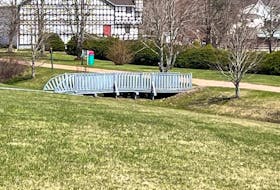The Nova Scotia Electoral Boundaries Commission is recommending the Acadian electoral districts of Clare and Argyle, along with the ridings of Shelburne County and Queens County be restored, and new lines drawn for Digby and Annapolis in its final report released on April 15.
The report entitled ‘Balancing effective representation with voter parity’ proposes increasing the number of seats in the House of Assembly from 51 to 55 – which would include the creation of two additional seats for Halifax Regional Municipality and the restoration of the Acadian electoral district of Richmond, as well as the African Nova Scotia electoral district of Preston.
For the final report, the commission's terms of reference mandated that only one set of boundaries be recommended.
Until 2012, Argyle, Clare, Richmond, and Preston were protected ridings.
“These are now referred to as exceptional electoral districts,” reads the report. “We feel justified in restoring these as exceptional electoral districts as our terms of reference allows for the creation of such districts.
“Like the Mi’kmaq people, the Acadian and African Nova Scotian communities have a particular cultural uniqueness and territorial basis in Nova Scotia that supports the argument for retaining a form of ‘special status’ in the electoral redistribution process,” states the report.
“This status follows from the fact that they constitute minority cultural communities that are indigenous to Nova Scotia, and further can be said to have fairly well-defined territorial ‘homelands’ in this province that have been continuously occupied for hundreds of years… In short, these minority cultures are both distinctively Nova Scotian and deeply rooted in specific, territorially-based communities within the province.”
In Digby County, it’s recommended the boundary lines with neighbouring Annapolis County be changed. Digby is currently part of a Clare-Digby riding.
“We moved a section of the northeast boundary of the electoral district of Digby Annapolis into the adjacent district of Annapolis,” reads the report. “This change affects about 2,850 registered electors. It moves the following communities from Digby-Annapolis into Annapolis: Annapolis Royal part of Graywood, Litchfield, Port Wade, Delaps Cove, Hillsburn, Moschelle, Round Hill, Granville Beach, Karsdale, Parkers Cove, Victoria Beach, Granville Centre, Lake La Rose, Perotte, Wrights Lake, Granville Ferry part of Lequille, and Port Royal.”
In a media release, chair Colin Dodds said “the key issues confronting this commission are essentially those that challenged the previous commissions.”
“They are how to balance effective representation of African Nova Scotia and Acadian electors with voter parity and accommodate the ongoing shift of population from rural areas as well as taking account of the geography and communities of interest of the province,” he said.
Commission members were appointed in July 2018 by an all-party Select Committee of the House of Assembly and were provided with broad terms of reference, largely drawn from the report of the Keefe Commission.
The new commission conducted rounds of public consultations last fall and again in January, after releasing an interim report in November 2018.
When the commission visited this region as part of this latest discussion on electoral boundaries, restoring the Acadian ridings — as well as the riding of Shelburne that years ago was split into Argyle-Barrington and Queens-Shelburne ridings — was the message the commission heard.
Not everyone is completely pleased with the final report. In a media release the Fédération acadienne de la Nouvelle-Écosse (FANE) says it is with mixed feelings that it acknowledges the commission’s final report.
FANE says it applauds the recommendation for the reinstatement of electoral districts for Clare, Argyle and Richmond.
However, it is “extremely disappointed” with the commission’s recommendation to not provide an electoral district for Chéticamp, which was rejected five votes against four. FANE says it will appear before the Law Amendments Committee to reiterate the importance of the new electoral district for Chéticamp and will ask for a modification to the bill accordingly.
The report will be considered in the next session of the legislature. The spring sitting of the legislature wrapped up on April 12.
The commission’s report can be found online at http://nselectoralboundaries.ca.









